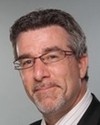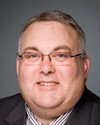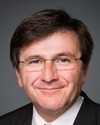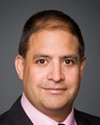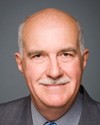Thank you, Chair and fellow colleagues.
As a member of Parliament who represents the federal riding of Prince Albert in the House of Commons, to say that I was surprised that two of the three members of the Saskatchewan electoral boundaries commission would decide not to incorporate the blended rural-urban model of Saskatchewan communities into its report is an understatement.
Both the Saskatchewan electoral boundaries commissions of 2004 and 1994 agreed that the electoral ridings consisting of a blended rural-urban makeup centred around the province's urban centres best reflected the nature of Saskatchewan's communities. Yet surprisingly, two of three members of the current Saskatchewan electoral boundaries commission decided, in their report, that the rural-urban blend does work very well for those who reside in the riding of Prince Albert but does not work well within the greater Saskatoon or greater Regina areas.
My community, both urban and rural, has been and still possesses the city of Prince Albert as its hub. While the small urban and rural communities of Shellbrook, Melfort, Nipawin, and Tisdale possess their own unique traits and attractions, the centre of trade, commerce, health provision, sports, and entertainment will still remain in the city of Prince Albert. The city remains the hub of our community, as Saskatoon still remains the hub for smaller communities of Humboldt, Rosetown, Biggar, and Warman, and as Regina still remains the hub of the smaller communities of Moose Jaw, the Qu'Appelle Valley, and Lumsden.
Those in favour of the Saskatchewan boundary changes may argue that members of Parliament have the option of opening satellite constituency offices throughout their riding to better serve their constituents. This, I believe, is not in sync with the ongoing budgetary constraints that we as MPs have placed upon ourselves.
Others in support of the Saskatchewan boundary changes point to the fact that the wireless information age has made personal meetings with members of Parliament obsolete, as a webcam meeting is as effective as one face to face. This type of thinking is discriminatory towards Saskatchewan's large senior population, which still employs traditional methods and modes of communication.
Further, much of rural Saskatchewan still only receives the Internet via dial-up modem, which cannot facilitate the data transmission speed necessary for video conferencing.
One can therefore only conclude that the electoral boundary commission member, David Marit, was correct to conclude in his dissenting report to the commission that moving away from a blended rural-urban model of electoral representation in Saskatchewan is a mistake. To quote Mr. Marit:
Close to 75% of the letters and public submissions the commission received were opposed to the proposed boundary changes. The number of replies that the commission heard and read, to my understanding, was the highest in Canada per capita. That is a very powerful argument for leaving the electoral boundaries, as close as the commission can, in their current form in Saskatchewan.
While I will not comment on the specific changes that I believe are necessary to make other Saskatchewan electoral ridings more representative in nature, I have found two small oversights in the commission's report, which are related to the ability of the constituency services to be provided for two areas located just outside of my riding's proposed boundaries.
As indicated in the map I have attached in the prepared brief, population centres located in area 1 and area 2, as illustrated in map number 1—which I believe you have in your possession—should be incorporated into the riding of Prince Albert. The communities of Batoche, Domremy, and Saint Louis, along with their surrounding villages and farms, as illustrated in map 2, as well as the communities of Saint Brieux and Naicam, along with their surrounding villages and farms, as illustrated in map 3, are all considered part of the greater Prince Albert area.
My riding is where the residents of these communities work and shop. It is where they receive their health provisions; it is where they travel for entertainment, sports, and leisure. Dividing them electorally outside the Prince Albert riding simply does not make sense. Placing these communities into separate electoral ridings also lessens the ability of their residents to receive proper constituency service.
As illustrated in map 2, the distance residents must travel to receive constituency service at the member of Parliament's office in the new riding of Humboldt—Warman—Martensville—Rosetown is far greater than the distance such residents would drive to receive the same service in the city of Prince Albert.
With the commission's proposed boundaries, residents in the village of Saint Louis, for example, will now have to drive an hour and a half, 128 kilometres, to the town of Humboldt to meet with their member of Parliament, yet the drive from Saint Louis to the city of Prince Albert, where my primary constituency office is, is only 33 kilometres. The drive takes only 27 minutes.
With reference to map 3, the situation is in fact worse, as residents in these communities cannot drive directly to their MP's office of Yorkton for three or four seasons of the year due to the nature of the roads, as the rural municipal roads, which residents must travel, are only safe and driveable during the summer months.
Under the commission's boundary proposal, the residents in the village of Saint Brieux will now have to drive 35 minutes north to the city of Melfort, in my constituency, change highways, and then turn around and drive south a staggering 295 kilometres, or three hours, to reach the member of Parliament's office in the city of Yorkton.
Option B means driving 55.5 kilometres or an hour and 19 minutes south to Muenster, within the new riding of Humboldt—Warman—Martensville—Rosetown, changing highways and driving southeast 228 kilometres, two hours and 31 minutes, back to Yorkton—Melville riding to reach the member of Parliament's office.
I already provide constituency services in the city of Melfort on the first Wednesday of every month for the residents of the city and the surrounding communities. As you can see, Saskatchewan isn't like Toronto, where population is the concern. In Saskatchewan, distance is the concern. How many kilometres should a constituent have to drive to meet with their member of Parliament, and what is a reasonable size of territory an MP can effectively represent on behalf of his or her constituents?
These changes proposed by the commission in effect create two kinds of MPs for Saskatchewan. One kind of MP, outside of Saskatoon and Regina, represents a vast amount of territory, incurs great travel expenses, has less face time with their constituents, and has to balance competing demands from municipal and provincial MLAs. The other kind of MP, located within the city of Saskatoon, has to deal with only one mayor or one council.
I therefore recommend that both committees of the commission take all these considerations into account and redraw the Prince Albert riding boundary to incorporate these communities in order to ensure that these residents receive constituency services without having to travel exorbitant distances to receive them. I believe moving the Prince Albert boundary line to include the rural municipality of St. Louis, number 431, and to include the northern two-thirds of the rural municipality of Lake Lenore—



